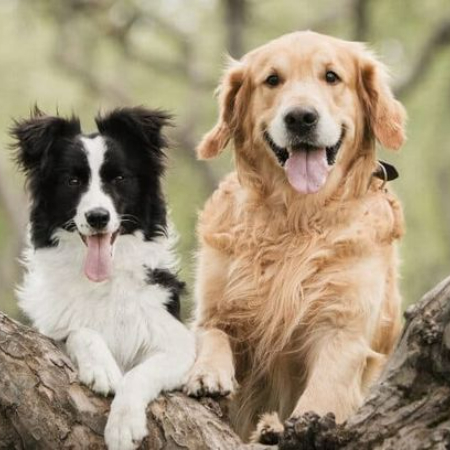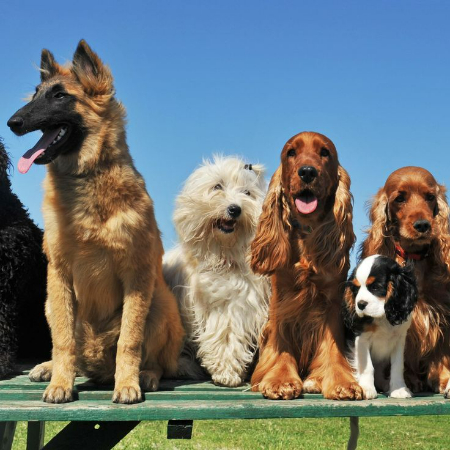The Surprising History of Dog Breeding: From Functional to Fashionable
For thousands of years, dog breeding has been an essential aspect of human history. Dogs have developed with humans from the first days of domestication to the present, changing from useful companions to stylish ornaments.
A fascinating story of human inventiveness, cultural changes, and the shifting requirements and desires of society is the voyage of dog breeding.
The Origins of Dog Domestication
Humans and dogs have been companions since the beginning of time. Fossils from Siberia and Europe that date between 15,000 and 30,000 years ago provide the oldest proof of dog domestication. It seems possible that the promise of food drew these prehistoric dogs, who are thought to be descended from wolves, near human settlements.

A mutually beneficial connection emerged over time when humans gave the dogs food and shelter in return for the dogs’ innate capacity for hunting and protection.
Rather than being selected for particular characteristics, the early domesticated dogs were prized for their practicality. Dogs with traits like loyalty, protectiveness, and hunting skill were probably preferred by early humans. These canines were vital to early human communities since they helped with guarding, hunting, and even herding animals.
The Emergence of Purposeful Breeding
Human societies and their needs developed together. Dogs’ functions became more specialized as agriculture and established communities grew in number. As a result, selective breeding was developed, in which canines possessing desired features were selected for reproduction in order to progressively improve these traits in offspring.
For example, dogs were bred for companionship and hunting in ancient Egypt. Dating back to approximately 3000 BCE, the Pharaoh Hound was prized for its quickness, dexterity, and excellent sense of scent. Comparably, the ancient Molossus breed from Epirus (modern-day Greece and Albania) was bred for size and strength, which made it the perfect fighting dog and guard dog.
Dogs have been bred by various cultures for specialized uses throughout history. Dogs were bred by the ancient Romans for protection, hunting, and warfare. The Irish Wolfhound, a breed of dog meant to hunt big game like wolves and boars, was created by the Celts and is famous for its size and strength. The Pekingese, a tiny, lion-like dog that was cherished by royalty and kept as a lap dog, was bred by the Chinese in the East.
The Rise of Purebred Dogs
The idea that dogs may be purebred—that is, bred to meet certain standards—started to gain traction in the 1800s. During this time, breed registers were established and dog shows gained popularity, formalizing the practice of breeding dogs for particular physical characteristics.
Only pointers and setters were on display at the first modern dog show, which was held in Newcastle, England, in 1859. The Kennel Club, which defined standards for different canine breeds, was founded at this event in 1873. Numerous breeds that are still in use today were developed as a result of the desire to produce and preserve purebred lines.
Around this period, the reasons for dog breeding started to change. Aesthetics gained importance while functionality continued to be crucial. Breeders developed breeds that were better suited for show rings than fields or farms as a result of their emphasis on physical characteristics including coat color, size, and shape.
Originally developed for bull-baiting, the Bulldog evolved into a companion dog with a characteristic stocky physique and flat face. Due to its long body and tiny legs, the Dachshund—once a fierce badger hunter—became a popular show dog.
The Impact of Fashion and Social Status
Dog breeding witnessed a boom in popularity as a social status symbol in the late 19th and early 20th century. Aristocrats and the rich used purebred dogs as a status symbol of their taste and sophistication. Breed standards publications and the growth of dog shows both contributed to this trend.

Some breeds developed to represent particular social strata or ways of life. The elite began to favor the Greyhound due to its sophisticated and streamlined look. The Poodle was once envisioned as a stylish companion for the upper class, with intricate grooming techniques that highlighted its unique coat. It was originally bred as a water retriever.
A fascination for the Pomeranian breed began in the Victorian era due to Queen Victoria’s love of dogs, especially the breed. A larger sled dog in the past, the Pomeranian was carefully bred to become smaller and better suitable for indoor living. Other breeds also followed suit, with the result that “toy” versions of the Poodle, Spaniel, and Terrier were developed.
The Modern Era: Breeding for Appearance Over Health
The emphasis on appearance occasionally came at the price of the health and well-being of the dogs as dog breeding continued to change. The demand for particular physical characteristics resulted in inbreeding, which raised the possibility of genetic illnesses. Numerous famous breeds now have health problems originating from their breeding lineage.
The Bulldog, for instance, has tiny nostrils and a flat face, which make it susceptible to respiratory issues. Despite their reputation for intelligence and adaptability, German Shepherds frequently suffer from hip dysplasia, a condition made worse by their unusually sloping backs. Similar to this, cardiac issues are common in Cavalier King Charles Spaniels, who are bred for their petite stature and expressive faces.
The market for purebred dogs is still very strong in spite of these obstacles. There are about 200 breeds recognized by the American Kennel Club (AKC), and each has its own set of guidelines. Large crowds are still drawn to dog shows like the Westminster Kennel Club Dog Show, and the desire for the ideal purebred dog still motivates dog breeders.
The Ethical Debate and the Rise of Designer Dogs
The morality of dog breeding has been called into question recently. Critics contend that it is unethical to breed dogs for particular qualities, especially ones that endanger their health. Reducing genetic variety and raising the risk of inherited diseases are two other criticisms leveled at the inbreeding method used to preserve purebred lineages.

Some breeders and dog lovers have resorted to “designer dogs,” or mixed-breed dogs that blend the qualities of two or more breeds, as a solution to these worries. The Labradoodle, a hybrid breed derived from the Labrador Retriever and Poodle, is among the most well-known representations of this phenomenon. Due to its low-shedding hair and amiable nature, the Labradoodle—which was once bred as a hypoallergenic guide dog—has gained popularity as a family companion.
In order to create dogs that are healthier and more adaptive, designer breeds frequently blend the greatest qualities of their parent breeds. But the growth of puppy mills, where dogs are bred in subpar conditions to meet demand, has also been attributed to the popularity of designer dogs.
The Future of Dog Breeding
Dogs and people have a strong affinity, as seen by the history of dog breeding. Dog breeding methods and ethics will advance along with our understanding of genetics and animal welfare. It’s possible that in the future, the emphasis on a dog’s health, temperament, and general well-being will replace the desire of physical perfection in dog breeding.
Within the dog breeding community, there are already movements advocating for the health of dogs above their looks. Breeders are identifying and lowering the danger of hereditary disorders through genetic testing more and more. Certain breed associations have gone so far as to amend their guidelines in an attempt to deter the breeding of dogs with excessive physical characteristics that endanger their health.
In conclusion, the evolution of human society’s requirements, values, and desires is reflected in the history of dog breeding. Dogs have evolved from dependable working companions to stylish mates thanks to our hands and hearts. As we proceed, we must think about the moral ramifications of dog breeding and work to build a society in which dogs are appreciated for their companionship, health, and happiness as much as their outward looks.










